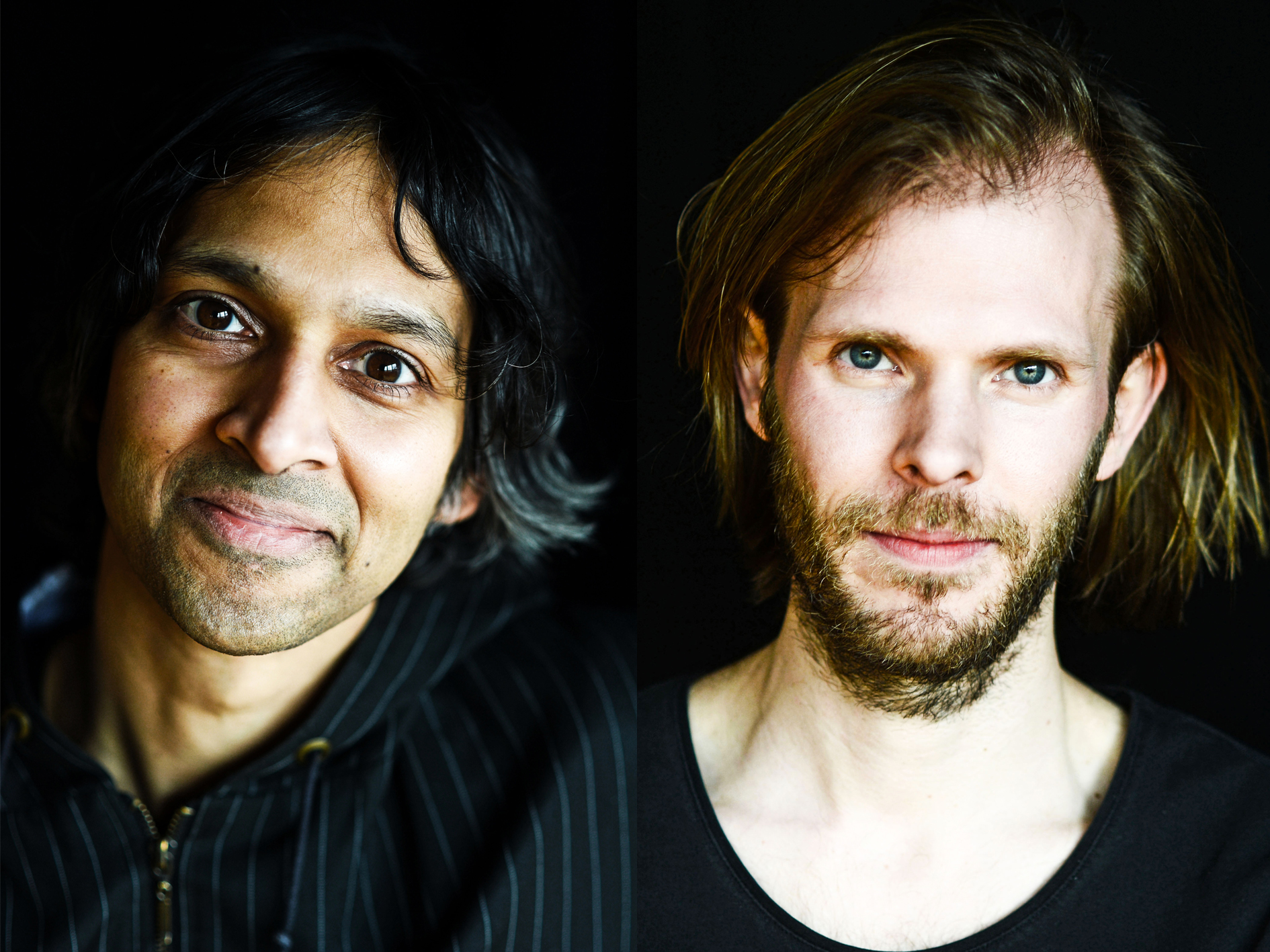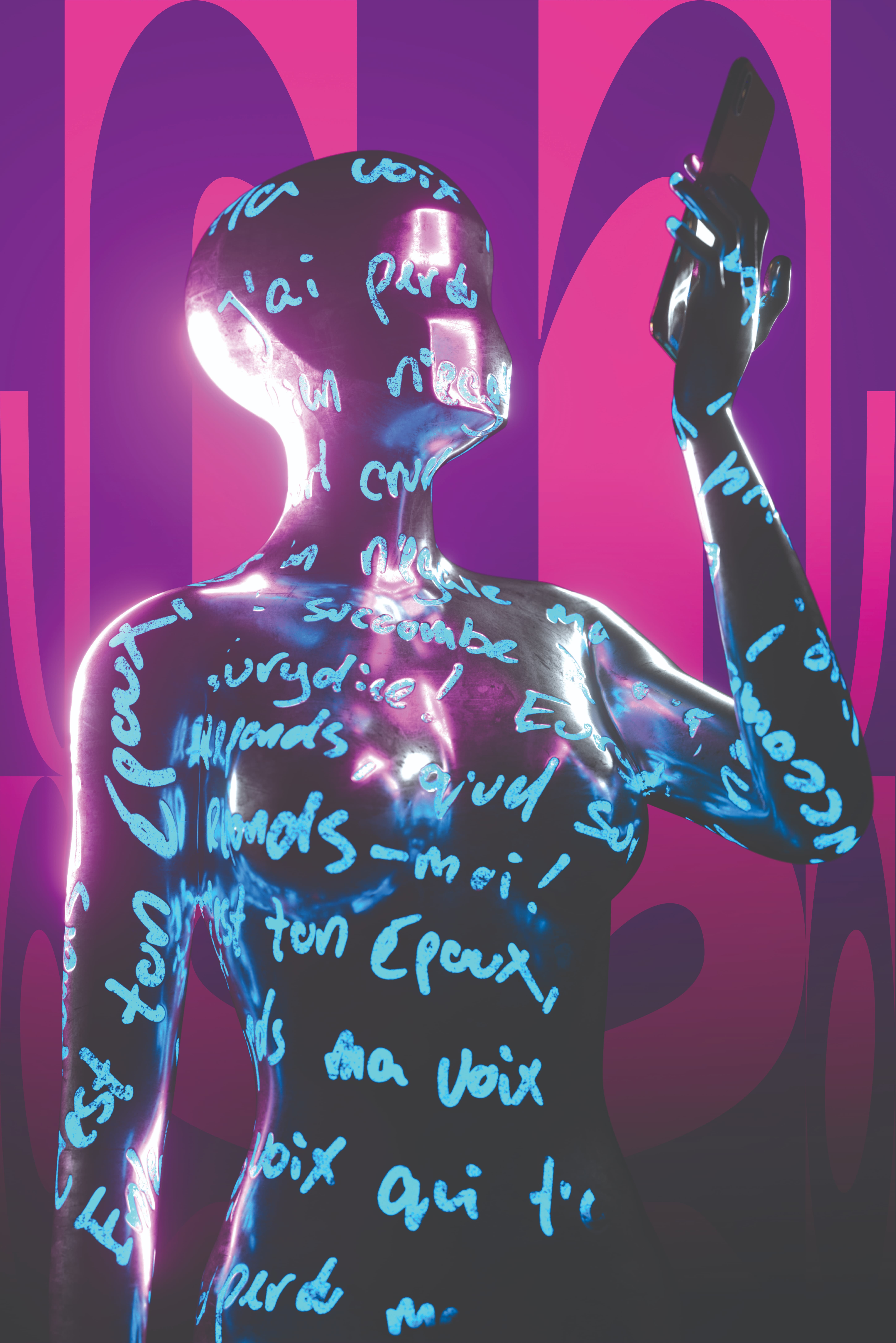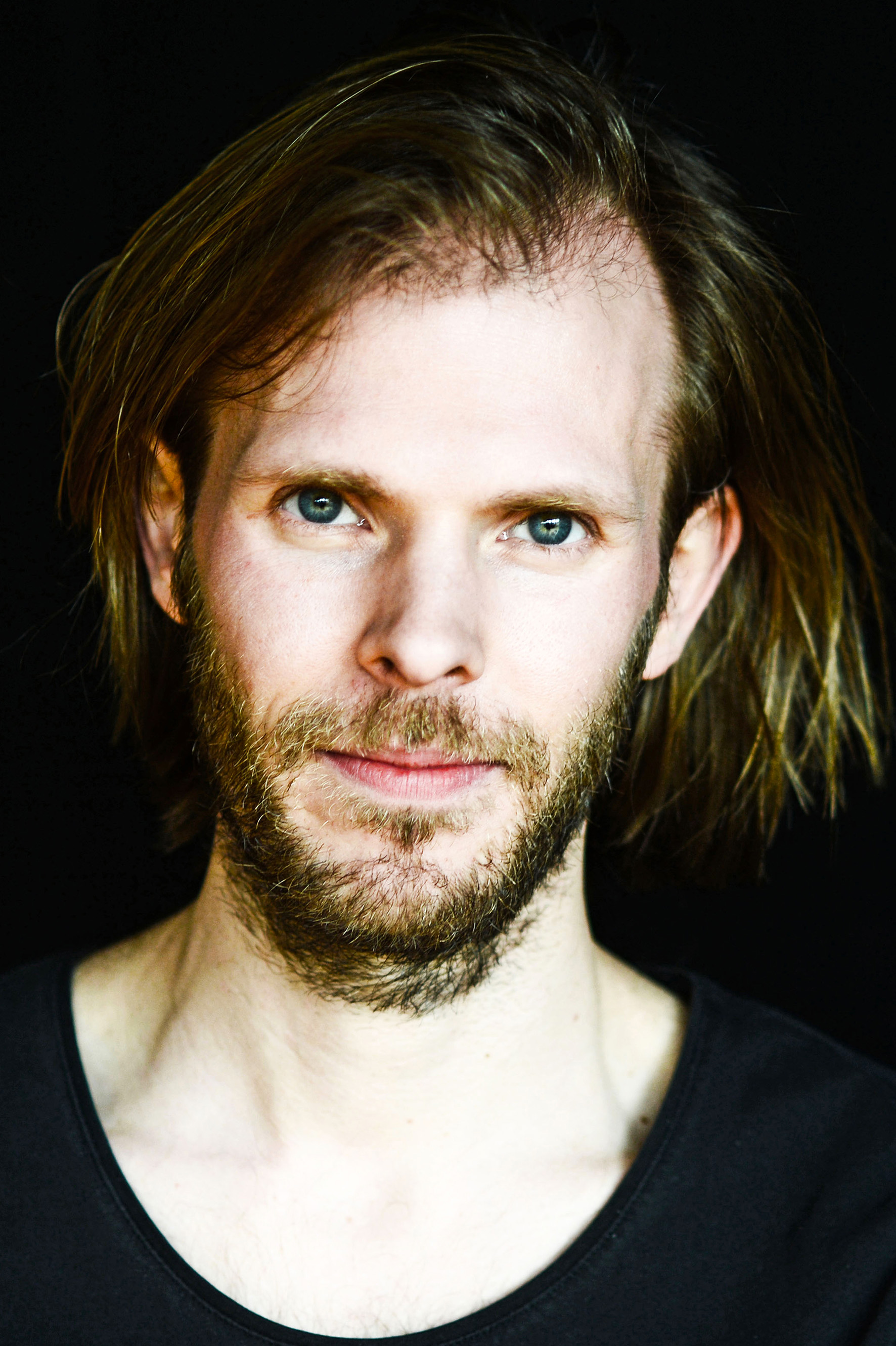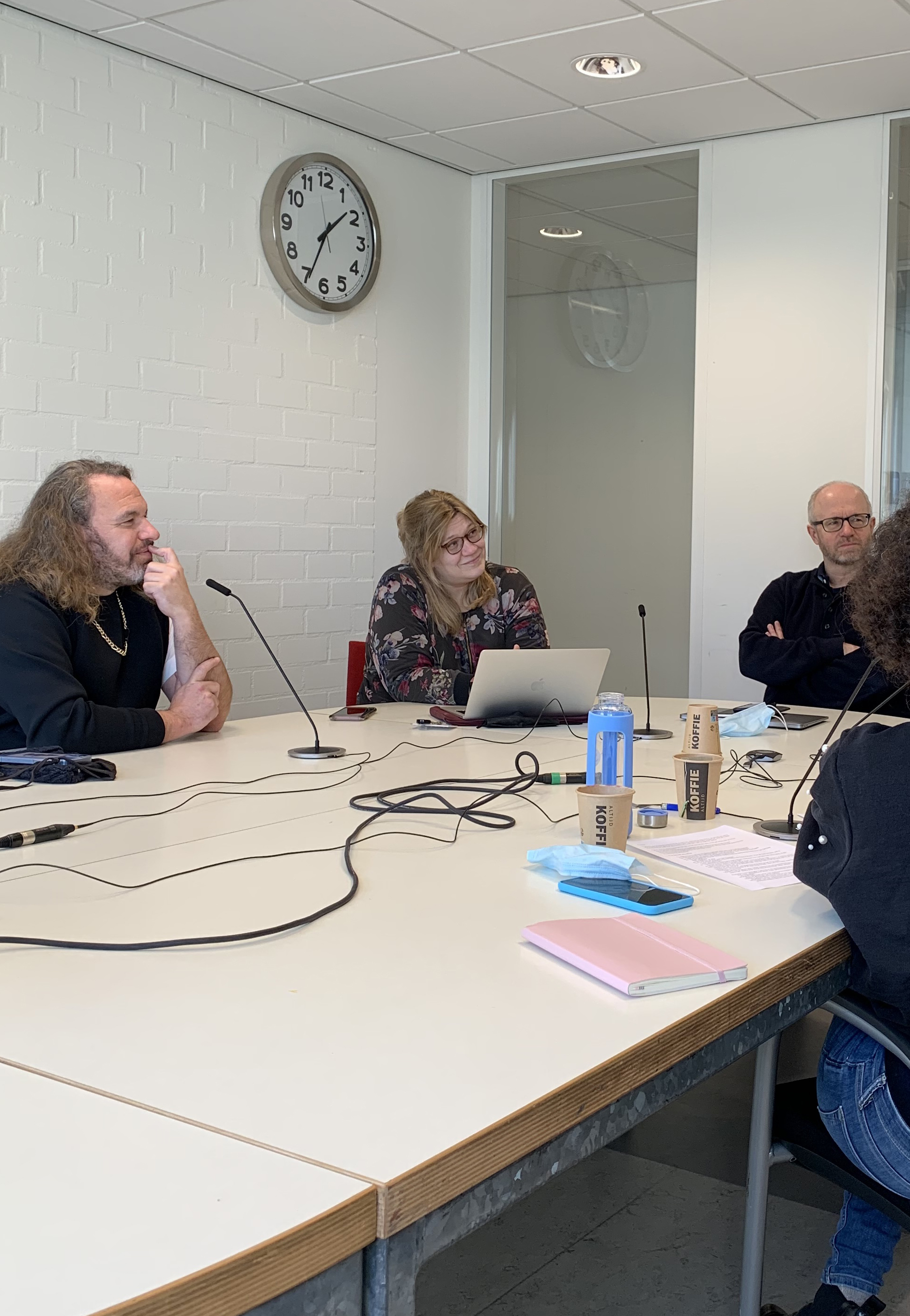Text: Laura Roling
Rehearsal Photo: Robin Coops
Portraits: Annina Romita
Director Robin Coops and virtual reality (VR) director Avinash Changa are very adamant about one thing: “It would be a mistake to think O | A | E is a virtual reality opera – rather it is an immersive opera experience that also uses VR along with many other resources. It is one of many elements that adds to and enhances the audience’s experience.”
At the time of this interview, the artistic team and the performers had just wrapped up their first rehearsal period at Reisopera in Enschede, where O | A | E will première in 2022. Robin explains: “We’ve now had the opportunity to test and try things out, and have identified what still needs to be done before the actual première.” Avinash adds: “The rehearsal period was incredibly beneficial to the cast as well as to everyone else collaborating on this production. Previously, it had all seemed a bit vague and intangible, as people weren’t sure as to what we were trying to create. They knew, of course that we would be using VR, that there would be singing and dancing and that the audience would be able to move through the set. But how this would all come together and what the objective was – that was something only Robin and I understood.”
Personal
Our aim for O | A | E was not to create something incredibly complex, but to tell a story. Robin elaborates: “The idea for this piece emerged about three years ago. My relationship had just ended, and I was completely grief-stricken. I couldn’t let go and I simply couldn’t understand my ex-girlfriend’s position and feelings. She looked back on our relationship as something beautiful, but had closed that chapter of her life. I remember listening to Gluck’s Orphée et Eurydice a lot at the time, and identifying strongly with Orphée, who went to great lengths to hold onto his love.”
It slowly dawned on Robin that this myth contained more than one perspective: “The traditional myth and Gluck’s opera both focus on Orphée, while Eurydice’s perspective is largely untold. But, what if Eurydice, much like my ex, was able to let the relationship go and embark on a new chapter in her life?”
Robin continued to reflect on Gluck’s opera and thought about love in the 21st century, while simultaneously recollecting his own personal experiences. Eventually he uncovered a third perspective: “There is a character in Gluck’s opera called L’Amour: the personification of love. Traditionally, love’s role was crystal-clear: he didn’t have to do much more than bring two people together. But in a world that relies on dating apps and where relationship definitions run the gamut, things are not so straightforward. Dating apps, for example, haven’t been designed to help you find the one, they have been built to keep you swiping and scrolling for as long as possible, ensuring you are constantly on the lookout for a better match.” This was how the idea for O | A | E was born: a production that would offer three isolated experiences: Orphée’s perspective, Eurydice’s perspective, and L’Amour’s perspective.
Visitors will only be able to purchase a ticket for one of these experiences, not for all three. This is why the title is divided by these distinctive lines: O | A | E.
Immersive
While virtual reality does feature in this work, it certainly doesn’t permeate the entire production. L’Amour may be a fully immersive VR experience, but VR only features partially in the Orphée experience, and not at all in the Eurydice experience. To explore how VR technology could tie in with this project, Robin contacted Avinash Changa. Avinash had founded his company WeMakeVR early on, making him a pioneer in VR. Avinash explains: “To me, it’s essential that it makes sense to use VR and that it serves the bigger picture. It shouldn’t just be a trick to pull out all the stops and impress. This is why Robin and I worked together to figure out how and, in what way, VR should be used for O | A | E.
The majority of people who have worn a VR headset associate it with being able to look at their surroundings from all directions. Robin explains: “In essence, this means using 360 degree videos, which is a pretty passive application of VR. Our production will use VR differently to ensure our visitors actually embody Orphée and L’Amour. Their hand movements will be transposed on to the virtual world, ensuring they become active participants in the performance, increasing their engagement and deepening their experience.”
Experience and immersion are key to O | A | E. Avinash says: “A traditional performance will have visitors enter our theatre, take a seat and then watch the action on stage. Our audiences are given an active role in this production, as they are fully immersed in the theatre world.” VR is a useful tool in this regard, but it is certainly not the only one: “The Eurydice experience does not rely on VR headsets at all. Instead, it uses headphones to provide a visceral and moving experience that stays with you.”
One space, different worlds
The entire experience is made more complex – and also more ingenious – by the fact that both Orphée and Eurydice are performed simultaneously in real time, on the same set. Maze de Boer designed the set: a house, or rather a house frame, with three interconnecting rooms. “One experience begins on one side of the frame, the other on the other side. Along the way, the two experiences converge in the middle room; but real connection in this shared space is impossible. How we managed to achieve this, will remain a secret for now.”
It is not just the space itself that makes contact between the different experiences impossible, the performers will be communicating via completely different languages as well. Robin elaborates: “Tenor Lucas van Lierop plays the role of Orphée. His language consists of song and music. Composer Zbigniew Wolny incorporates well-known passages from Gluck’s opera, but also adds his own personal touch by paring this with electronics, while Lucas plays the guitar. Eurydice, however is performed by a dancer who communicates through movement, a language that Orphée literally cannot hear. It is an actress who takes on the role of L’Amour in both the Orphée and the Eurydice experiences, acting as a sort of intermediary between the two.
Small scale
Unlike most performances in the theatre, this production caters to a small audience. Robin adds: “It all depends on your perspective: when compared to most theatre productions, this work can indeed be classified as a small production. However, when compared to other immersive experiences, which are often one-on-one, this production can be deemed a large-scale project.”
The directors are also looking forward to the future. Robin says: “Of course we hope this production will be staged more often, also at an international level. We took this into account during the entire production process, which is why the set is scalable and also very compact in terms of transport.”
The production could also potentially be streamed online to reach a wider audience. Avinash tells us: L’Amour is a fully immersive VR experience. Love is unable to fulfil its role anymore and calls on the audience for help. Each audience member is free to take certain decisions in this interactive experience, which reveals a great deal about their perspective on love and relationships. It is wonderful that anyone can don on a VR headset and access this experience from anywhere in the world.” This touches on another one of Robin’s dreams: “We are currently looking at how this production could be converted into a film.”



